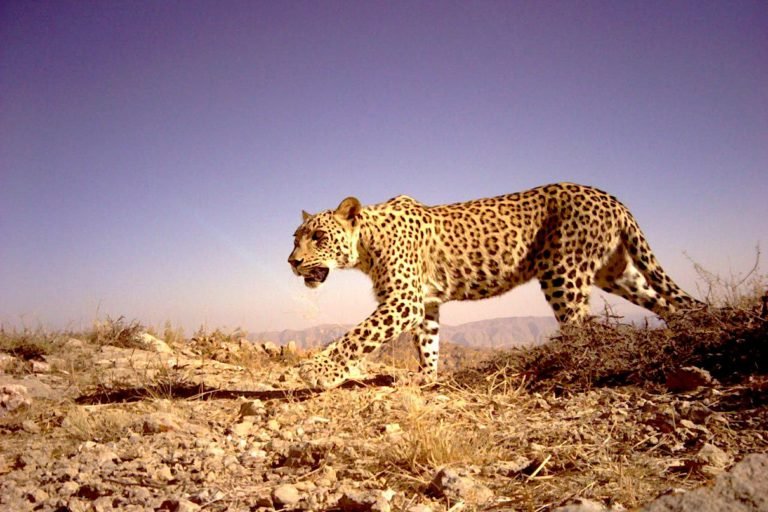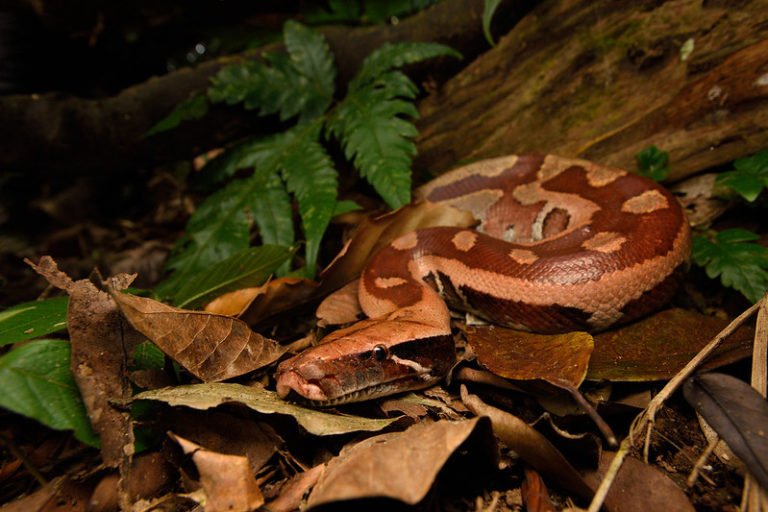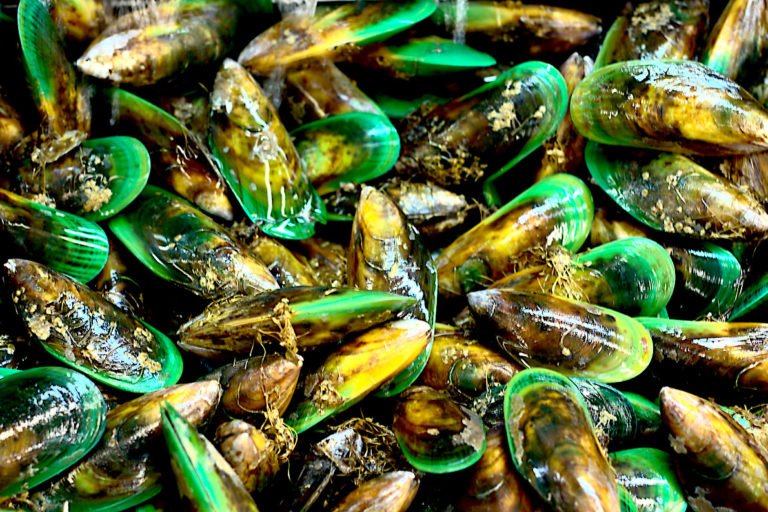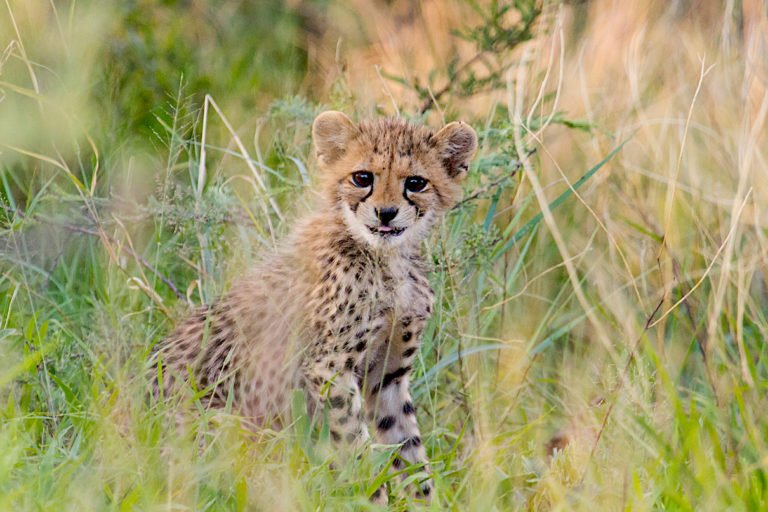- For World Environment Day 2022 on June 5, Jane Goodall is one of 50 top conservationists urging protection for the big cats and clemency for seven scientists imprisoned for their work studying them.
- In an open letter, the scientists highlight the impact of current conflicts, sanctions and political tensions on the conservation of the Persian leopard, and on the very people dedicated to protecting them.
- Goodall et al call for actions to facilitate international cooperation beyond recent political circumstances, like the lifting of economic sanctions, plus development of clear criteria regarding funding and technical cooperation, and the release of the imprisoned scientists.
- This letter is a commentary containing the opinions of its writers and signers, not necessarily of Mongabay.
At times of anguish and confusion we turn to nature to quiet the mind and find healing. We hold on to the miraculous survival of wildlife and ecosystems, to persist in the face of struggles we have no control over, leaving us often drained and hopeless.
For us, one of those miracles is a beautiful feline, the Persian leopard (Panthera pardus tulliana), roaming mountains and cold winter deserts of Central Asia and the Middle East. Persian leopard range spans across 11 countries: Iran, Iraq, Turkey, Azerbaijan, Armenia, Georgia, Russia, Turkmenistan, Kazakhstan, Afghanistan and Pakistan. Tajikistan and Uzbekistan were part of the range but they are now considered extinct there. Almost 80% of these leopards are found in Iran, followed by Turkmenistan. In the Caucasus, long-term conservation efforts have led to the unique recovery of a small population in the Zangezur region, including the south of Armenia and southeast of Azerbaijan’s Nakhchevan Autonomous Republic (Persian Leopard Working Group (2022) Range-Wide Strategy for the Conservation of the Persian Leopard Panthera pardus tulliana, draft).
During the summer of 2021, a Persian leopard was camera trapped in Tusheti Protected Areas in Georgia after a 12 year-long absence. Shortly after, Persian leopards (not related to the reintroduction program in the Russian Caucasus) were spotted in Russian Kabardino-Balkaria, Chechnya and Dagestan. In Kazakhstan, Persian leopards were re-discovered in 2018, though unfortunately the only animal known there died in 2021. Recently in Turkey, leopards were recorded at four different locations, some of which are dispersing male individuals from the source populations in the Lesser Caucasus. In Iraq, since its recovery in 2011, around nine dispersing males and a female have been identified in the Kurdistan region, at eight different locations. At least three leopards have been killed in the region in the last five years.
Persian leopard research and activities have ignited awareness and advocacy for these cats and the classic threats they face (poaching, loss of habitat and prey, human-wildlife conflict) but also raised awareness in the countries they inhabit and the importance of maintaining connectivity among them, and not just in the ecological sense. Some of the Persian leopard range countries face different political challenges.
In the Caucasus, between Azerbaijan and Armenia, leopards navigate a landscape of mines and tensions brought by the still ongoing Nagorno-Karabakh conflict. Military operations along the Iraq-Iran and Iraq-Turkey borders continue to displace people and burn Iraq’s few surviving natural forests. Since the advent of ISIS in 2014, political tensions and economic recession have pushed biodiversity and species conservation to the bottom of the priority list in the country, with no local funding available to support local conservation projects. Changes in U.S. leadership in 2016 resulted in the U.S. exit from the Comprehensive Plan of Action (“the Iran nuclear deal”) and “maximum” pressure sanctions, not only hurting and isolating the people of Iran, but also indirectly hurting conservation initiatives, and some of the very people leading them.
In January 2018, nine conservationists associated with the Persian Wildlife Heritage Foundation were arrested, including Kavous Seyed-Emami, who died in jail in February 2018. They were accused of spying because they were using camera traps, not widely understood to be important conservation tools at the time: four years and four months later, seven of them are still in jail.
In August 2021, the Taliban surged back to power in Afghanistan, sending into exile many at-risk conservationists, and the National Environmental Protection Agency into disarray. The continued freeze of Afghan funds has precipitated an already dire humanitarian crisis which the nature and wildlife of Afghanistan are also paying the price for. The very few leopards in Afghanistan have now an even more bleak chance of surviving.
Lastly, in February 2022, the Russian invasion of Ukraine triggered international measures to isolate Russia and its citizens, effectively putting a stop to international cooperation in the environmental field. It is unfortunate since the future of the Persian leopard in the Greater Caucasus in Georgia benefits from such cooperation.

The Convention on Migratory Species (CMS) and the German Federal Agency for Nature Conservation (BfN) plan to organize a Range States Meeting to adopt a Regional Strategy for the Conservation of the Persian Leopard, in the framework of the Central Asian Mammals Initiative Programme of Work. Over the past year, a group of experts from across the leopard’s range led by the IUCN Special Survival Commission Cat Specialist Group co-chairs, worked to develop the foundations for it. The meeting is scheduled to take place in September 2022 in Tbilisi, Georgia.
The draft strategy is very ambitious, and the success of its implementation rests very much on the recognition that nature and conservation require international cooperation and funding, as well as keeping our community of conservationists safe to do the work it takes to protect the Persian leopard. Camera traps are also essential for monitoring wildlife: they may not have been well understood five years ago, but they have since been demonstrated to be a fantastic way of learning about elusive animals, and much research could not be possible without them.
We would therefore like to call for:
- measures and actions to facilitate international cooperation beyond the political circumstances, such as in Iran, through lifting of economic sanctions and barriers to international conservation and development cooperation;
- the development of clear criteria regarding funding and technical cooperation to ensure that conservationists are never wrongfully persecuted for cooperating with international experts and organizations;
- continued engagement through technical and financial support such as in Afghanistan, to ensure enduring conservation outcomes; and
- the release of Niloufar Bayani, Sepideh Kashani, Amirhossein Khaleghi, Taher Ghadirian, Sam Rajabi, Houman Jowkar and Morad Tahbaz – their continued detention weighs heavily on all of us, as we are concerned that the fate of leopards is jeopardized in Iran as long as they are in jail.
We hope that soon the international community recognizes that the conservation of the Persian leopard and the lives of its defenders are intertwined, and we encourage all Persian leopard range states to stand behind their important work.
Jane Goodall, conservationist, U.K.
Hedieyeh Tehrany, conservationist, Iran
The letter is also signed by the following:
- Abdul Wali Modaqiq, conservationist, Afghanistan
- Abnous Sadeghi, conservationist, Iran
- Alex Dehgan, conservationist, U.S.
- Ali Madad Rajabi, conservationist, Afghanistan
- Ali Ranjbaran, conservationist, Iran
- Azar Sedaghati Khayat, conservationist, Iran
- Arash Ghoddousi, conservationist, Iran
- Bejan Lortkipanidze, conservationist, Georgia
- Bilal Mustafa, conservationist, Pakistan
- Christiane Roettger, conservationist, Germany
- Corinna Van Cayzeele, conservationist, Germany
- Danial Nayeri, conservationist, Iran
- Delaram Ashayeri, conservationist, Iran
- Deniz Mengüllüoğlu, conservationist, Turkey
- Farid Perota, conservationist, Iran
- Gholamreza Ghaderi, conservationist, Iran
- Giorgi Arabuli, conservationist, Georgia
- Jalaludin Naseri, conservationist, Afghanistan
- Hamed Abolghasemi, conservationist, Iran
- Hana Raza, conservationist, Iraq
- Haniyeh Ghaffari, conservationist, Iran
- Hosein Yusefi, conservationist, Iran
- Igor Khorozyan, conservationist, Armenia
- Iman Memarian, wildlife veterinarian, Iran
- Jeiran Khoylou, conservationist, Iran
- Koen Cuyten, The Netherlands
- Korsh Ararat, conservationist, Iraq
- Ladan Salamat, conservationist, Iran
- Leili Khalatbari, conservationist, Iran
- Mahgol Kazari, conservationist, Iran
- Maria Gritsina, conservationist, Uzbekistan
- Mark Pestov, conservationist, Russia
- Mehran Seyed Emami, conservationist, Iran
- Nahid Ahmadi, conservationist, Iran
- Nasratullah Jahed, conservationist, Afghanistan
- Natalie Schmitt, conservationist, Canada
- Niloufar Raeesi, conservationist, Iran
- Pooyia Ghoddousi, conservationist, Iran
- Pooriya Sepahvand, conservationist, Iran
- Rodrigo Medellin, conservationist, Mexico
- Rooyesh Hashim, conservationist, Afghanistan
- Samira Firouz, conservationist, Iran
- Shabnam Vaghayenegar, conservationist, Iran
- Sheyda Ashayeri, conservationist, Iran
- Siavash Ghoddousi, conservationist, Iran
- Tatjana Rosen, conservationist, Georgia
- Vladimir Terentiev, conservationist, Kazakhstan
- Yasaman Talebi, conservationist, Iran









